2023 Honda Pilot
| The Good: – Better styling inside and out – Cabin space and features – Very comfortable ride |
The Bad: – Bit pricey with options – Few hard-plastic cabin bits – No performance improvement |
The Pilot has been a historically boring model for Honda. Quite possibly the most boring in Honda’s history. Even the Odyssey minivan is far more exciting to drive, and they share the same platform. Bulky, soft and slow, it was a dud in terms of driving enjoyment, but an absolute winner in terms of practicality in an urban SUV. It’s been through three previous generations and they all looked about as interesting as an off-brand vacuum cleaner, so when the all-new Pilot was first revealed, we were happy to utter “I wouldn’t mind one of those.”
The new Pilot now has a well-balanced three-row SUV profile that was already perfected by its many rivals, namely the Explorer, Acadia, Highlander, Pathfinder and Durango, all of whom also went through an ugly phase at some point in the past. In an impressive bit of design trickery, the new Pilot looks smaller than the old one, but is actually around 10 cm longer and 1 cm taller.
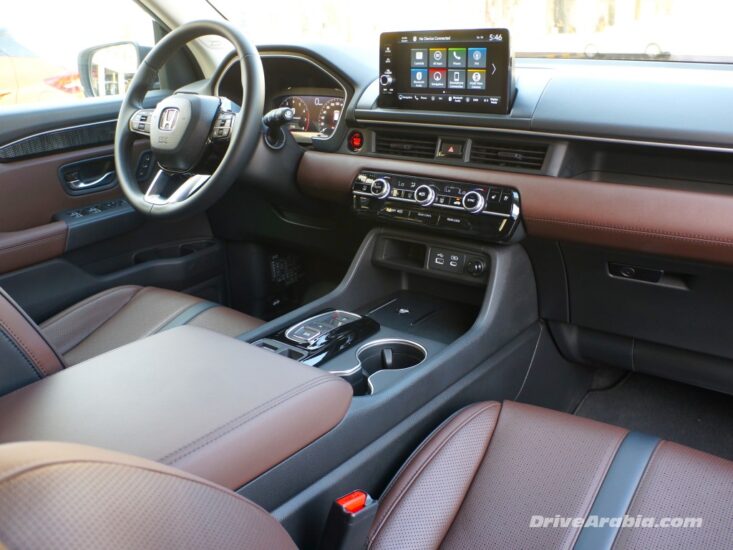
That would also explain how interior space has increased as well. Both second and third rows now have a bit of extra legroom, and the boot is bigger as well, with cavernous space available if both the rows are folded flat. The individual second-row bench seatbacks fold in three pieces, while third row access is decent.
Front riders now enjoy a cleaner dashboard design with premium soft-touch materials and leatherette surfaces, although the amount of nice trim reduces as you go back row by row, until you’re surrounded only by hard plastics in the third row. The overall design still isn’t as slick as in the Mazda CX-90 or the Hyundai Palisade, but the Pilot definitely has more practical storage cubbies.
Honda’s trademark storage solutions continue to impress, including two levels of pockets on every door, a deep centre-armrest storage console, and shelves in the dash for phones and wallets. There is also a deep storage area under the boot floor. And little touches remind you that this wasn’t a hastily engineered car, such as phone pockets in the front seat-backs and a middle headrest for the third row.
The standard touchscreen is a conservative 9-inch one, with a 9-speaker audio system on all trims. However, our top Touring model has a 12-speaker system, and it seems this trim is offered in only some GCC countries. The interface isn’t overly fancy, but it does come with wireless Apply Carplay and wired Android Auto.
Other standard features include a standard tri-zone auto a/c that’s decent in the Dubai summer, as well as a 7-inch gauge-cluster display, full LED lighting with auto headlights, smart key with remote start, rear camera with front/rear parking sensors, a full set of airbags including front knee airbags, and a full suite of Honda Sensing features. Our Touring also has a panoramic moonroof and roll-up rear-door sun-blinds.
Standard Honda Sensing includes adaptive cruise control and lane keep assist, as well as all sorts of collision warnings. The top Touring trim only adds blind-spot monitoring and rear cross-traffic alert.
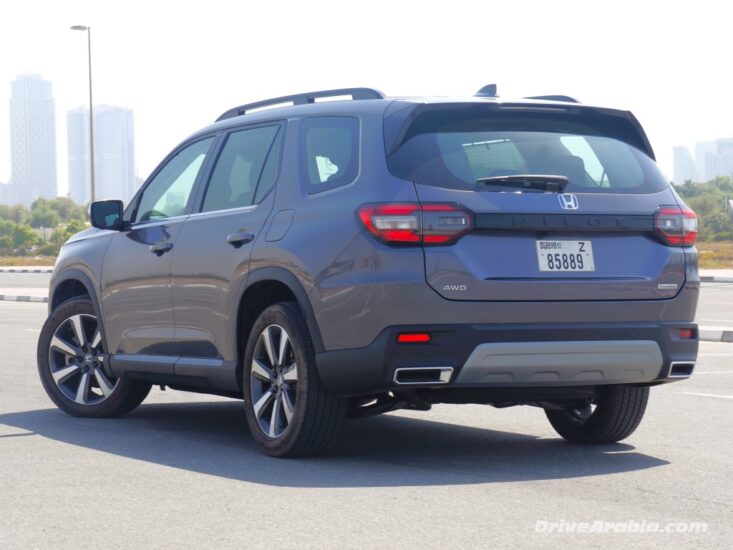
The engine is a bit of a conundrum, as it is purportedly an all-new DOHC V6 that ditches Honda’s trademark VTEC system. However, displacement remains the same at 3.5-litre, with a negligible increase in power with 285 hp at 6100 rpm and 355 Nm of torque at 5000 rpm. A 10-speed automatic gearbox replaces the old 9-speed automatic.
We didn’t notice many changes with the engine itself, but the new 10-speed automatic is a much better performer, as it is responsive and downshifts quickly as needed, although it still has a tendency to upshift to the highest gear to improve fuel economy.
Ironically, the new engine is also rated to have slightly worse fuel economy than the old motor. So you might be wondering why they changed at all. It has to do with emissions, if you care about that sort of thing. The new engine reduces NOx and particulate matter emissions by 40 and 50 percent respectively, future-proofing it against tougher regulations in the larger American market.
The new Pilot weighs almost 200 kg more than the old model as well, so flooring the throttle remains an unexciting matter, as it did the 0-100 kph run in 8.4 seconds during our Dubai summer test, while burning fuel at a rate of 13.5 litres/100 km (7.4 km/litre). It is slightly slower and thirstier than the old model, but it was a necessary evil to dramatically reduce emissions. Only Honda knows why they couldn’t just go for a turbo solution.
The Honda Pilot still retains its trademark comfortable and pleasant ride. While the old one was bordering on being too soft and lumpy, the updated chassis is more settled and refined, with lesser body roll despite the bigger body. Still, it errs on the softer side with excessive up and down movements on slight road bumps, and feels a lot like a body-on-frame SUV. Some direct rivals offer more car-like handling characteristics.
Our Pilot Touring rides on 255/50 tyres wrapping 20-inch wheels, while lower-spec models get 18-inchers. The rubbers provide decent grip and nothing untoward happens on the way to early understeer. But while the handling remains worse than the king-of-minivans Odyssey, it is perfectly in line with popular offerings from the Koreans.
One of the biggest improvements Honda made was reducing the in-cabin noise. With more sound insulation, the Pilot tones down the tyre and wind noise, although engine noise is still noticeable on any sort of throttle input.
Typical buyers will appreciate the soft and nimble steering, even though the lack of appreciable feedback may put off enthusiastic drivers. Braking performance isn’t impressive, but wholly adequate.
While the base model is two-wheel-drive, Honda likes to pretend that the all-wheel-drive version of the Pilot has offroad capabilities, and to a certain extent, it does. With a decent all-wheel-drive system, drive-mode selector and ground clearance of 185 mm, it can manage gravel trails, milder dunes and the beach, but you still have to know what you’re doing to avoid damage. The overhangs are excessive and the tyres are road-biased. More serious offroaders such as the Jeep Grand Cherokee boast proper low-range gearing and sit even higher.
Having said all that, the Pilot is still among the top mid-size crossovers you can buy today. Well-engineered for what it is meant to do, if you’re not looking to visit the dealer every few months for minor issues, and plan to keep the car long after the warranty is over, it’s hard to argue against paying the premium for a Honda.
| Price Range: Dh 174,900-217,900 Current Model Introduced in: Body Styles: Engines: Transmissions: Setup: Suspension: |
Brakes: Front: discs Rear: discs Curb Weight: Length: Wheelbase: Top Speed: Test Acceleration 0-100 kph: Observed Test Fuel Economy: |
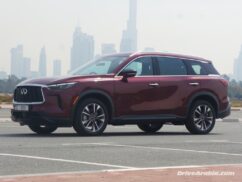
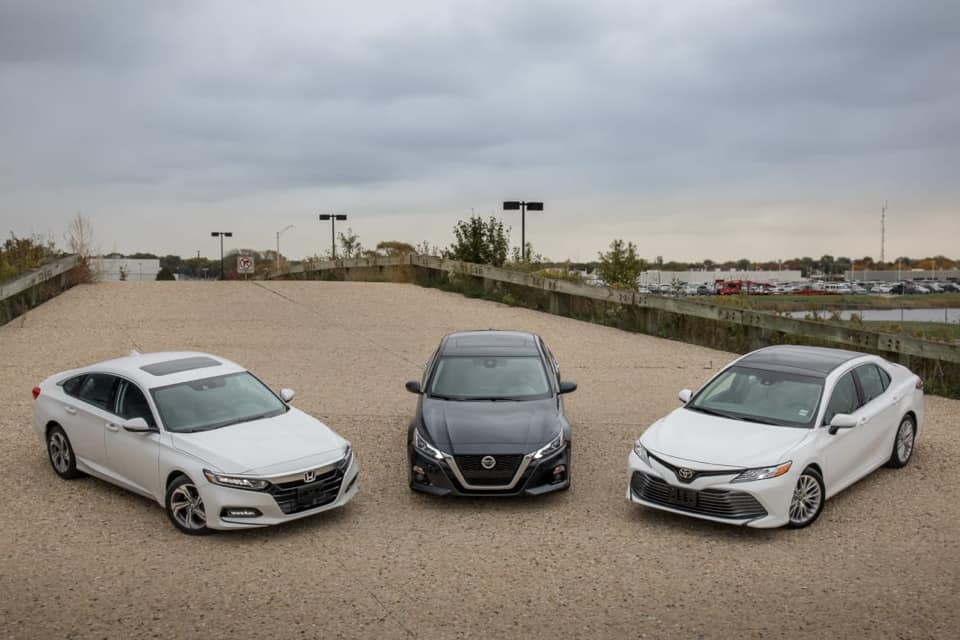

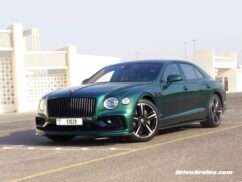
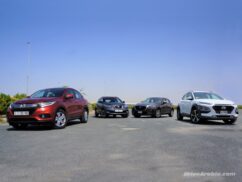
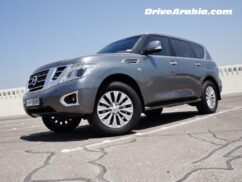
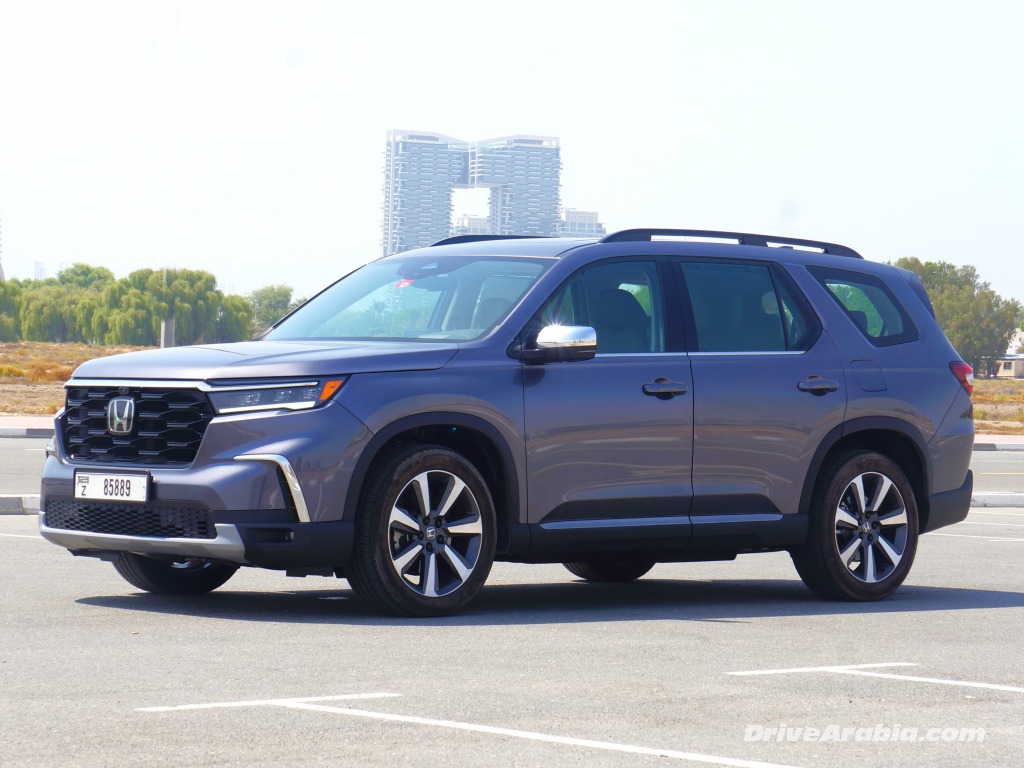

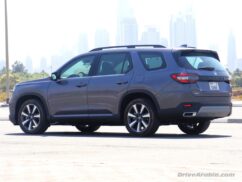
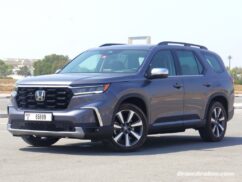
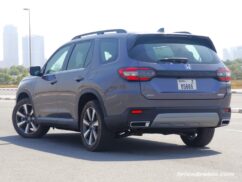
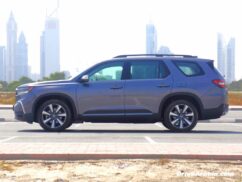
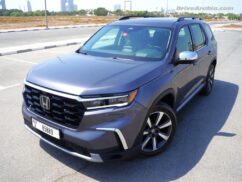
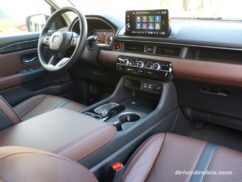
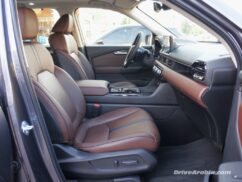
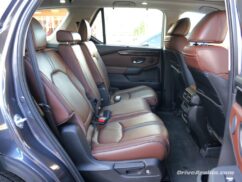
Comments
James
Test drove this car and already purchased it.
Loved the space inside and the way it drives. The EXL trim has 210mm ground clearance, which is very reasonable. With high fuel prices becoming a norm in the Middle East, I am sure there will be lot of takers for this SUV, which is offering space as good as a Land Cruiser (not the capability).
Marouf Hussain
It indeed drives well, which I believe most Chinese brands haven’t mastered yet. Right observation about fuel prices becoming an important factor these days on car purchases.
palioman
Another dud from Honda. As a former owner of the v6 Accord and then the 2.0 Turbo Accord, Honda does not interest me anymore with its new products.
They definitely need to improve product lune up, not rehash old models and engines. At premium prices.
Zi
Sorry i dozed off just reading about Pilot! It continues to be a over priced dud sold by the agency here. same car is a lot cheaper in the US, says a lot about profit margins. there are so many better choices at these prices including some of the ones you mentioned and VW Terramont which now comes with 7yr service plan!
Rahul
VW Terramont is out of production. No wonder dealer is selling these unreliable European brands with 7 yrs package. Someone who buys a Honda will still be driving the car 7yrs and beyond while retaining a decent resale value, while many of the overpriced European brands after 7yrs start breaking down with junk resale value.
So exercise good caution
Marouf Hussain
VW Teramont is not out of production.
prado
a 9 inch screen for a vehicle costing 220K?…
`Sachb
This is `honda’s best car in 2023, Peppy, fuel efficient and yet practical, but it can’t do offroading in the UAE desert, with it’s low ground clearance. The UAE doesn’t get the trail sport model with an upgraded suspension with a 1′ higher ground clearance.